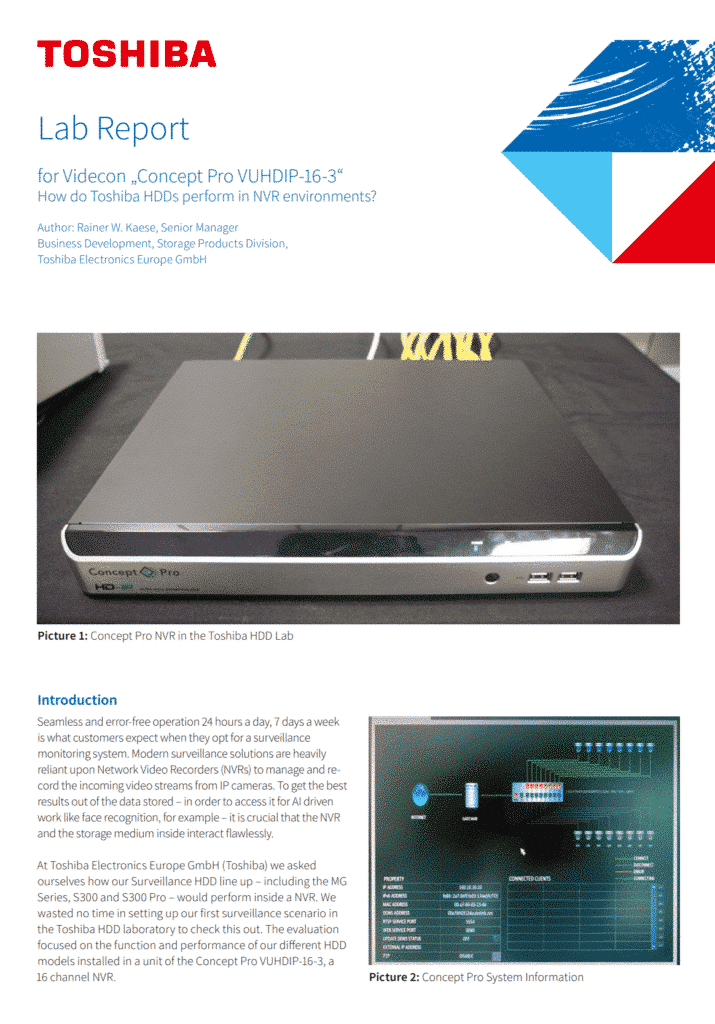Lab Report: How do Toshiba HDDs perform in NVR environments?
Introduction
Seamless and error-free operation 24 hours a day, 7 days a week is what customers expect when they opt for a surveillance monitoring system. Modern surveillance solutions are heavily reliant upon Network Video Recorders (NVRs) to manage and record the incoming video streams from IP cameras. To get the best results out of the data stored – in order to access it for AI driven work like face recognition, for example – it is crucial that the NVR and the storage medium inside interact flawlessly.
At Toshiba Electronics Europe GmbH (Toshiba) we asked ourselves how our Surveillance HDD line up – including the MG Series, S300 and S300 Pro – would perform inside a NVR. We wasted no time in setting up our first surveillance scenario in the Toshiba HDD laboratory to check this out.
The evaluation focused on the function and performance of our different HDD models installed in a unit of the Concept Pro VUHDIP-16-3, a 16 channel NVR.
Methodology
The Concept Pro VUHDIP-16-3 has two HDD bays, so we decided to install and operate two HDDs as one combined video storage system. We connected 13 PoE network cameras of different types and recorded 24/7 with constantly moving pictures. Such a scenario is fairly typical in larger houses, smaller businesses and home offices. We used this setup to confirm recording and playback/searching functionality, total retention time and overwriting functionality (for some disk models), as well as power consumption of the total unit and HDD operational temperature.
HDD models
We tested and assessed popular models of Toshiba’s S300 entry level Surveillance HDD series (1TB, 2TB), as well as the S300 Pro (4TB, 10TB) and an Enterprise MG-model (18TB) for longest retention time.
Download the whole Lab Report here.
Rainer W. Kaese, Senior Manager Business Development Storage Products at Toshiba Electronics Europe


